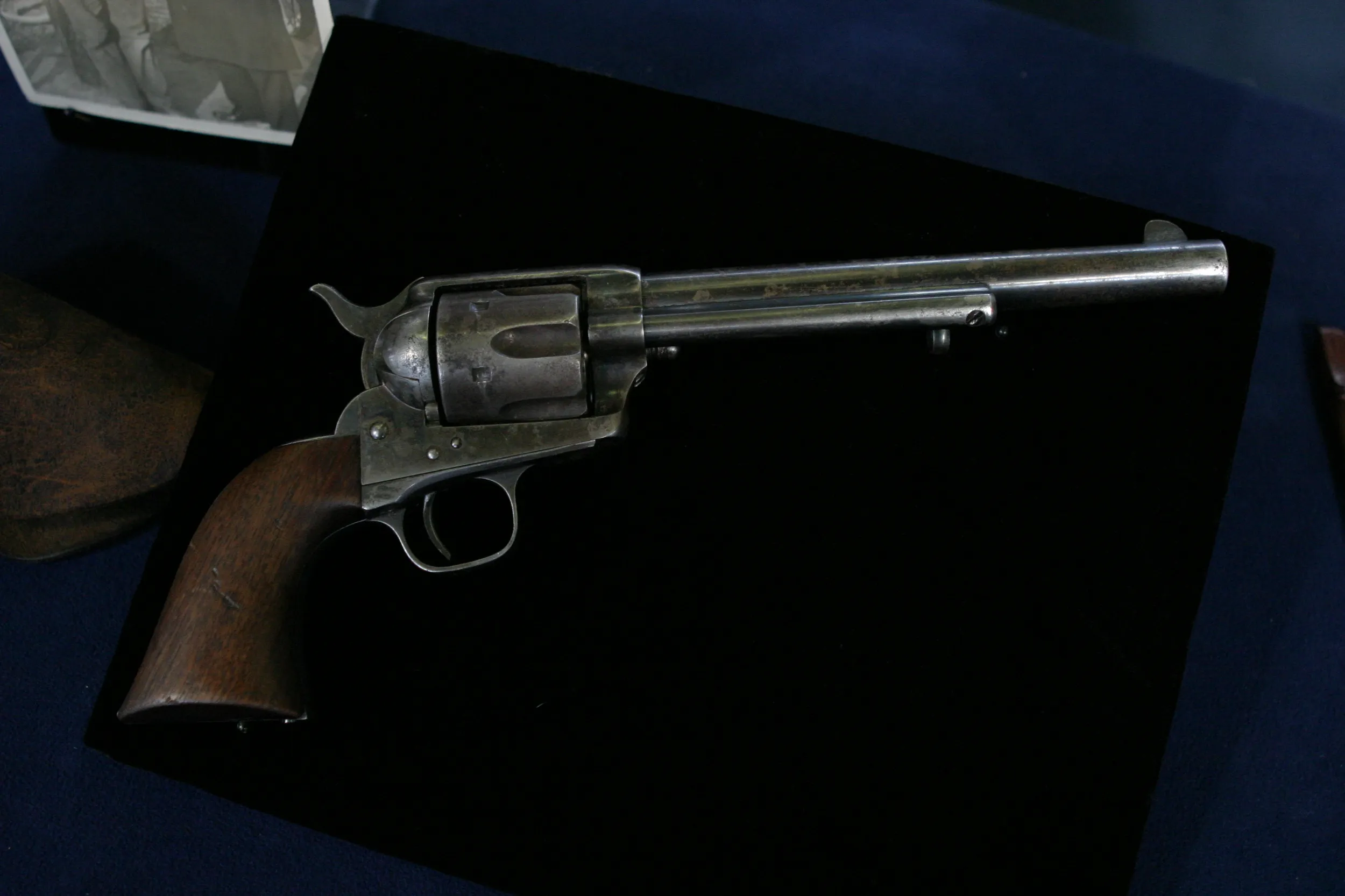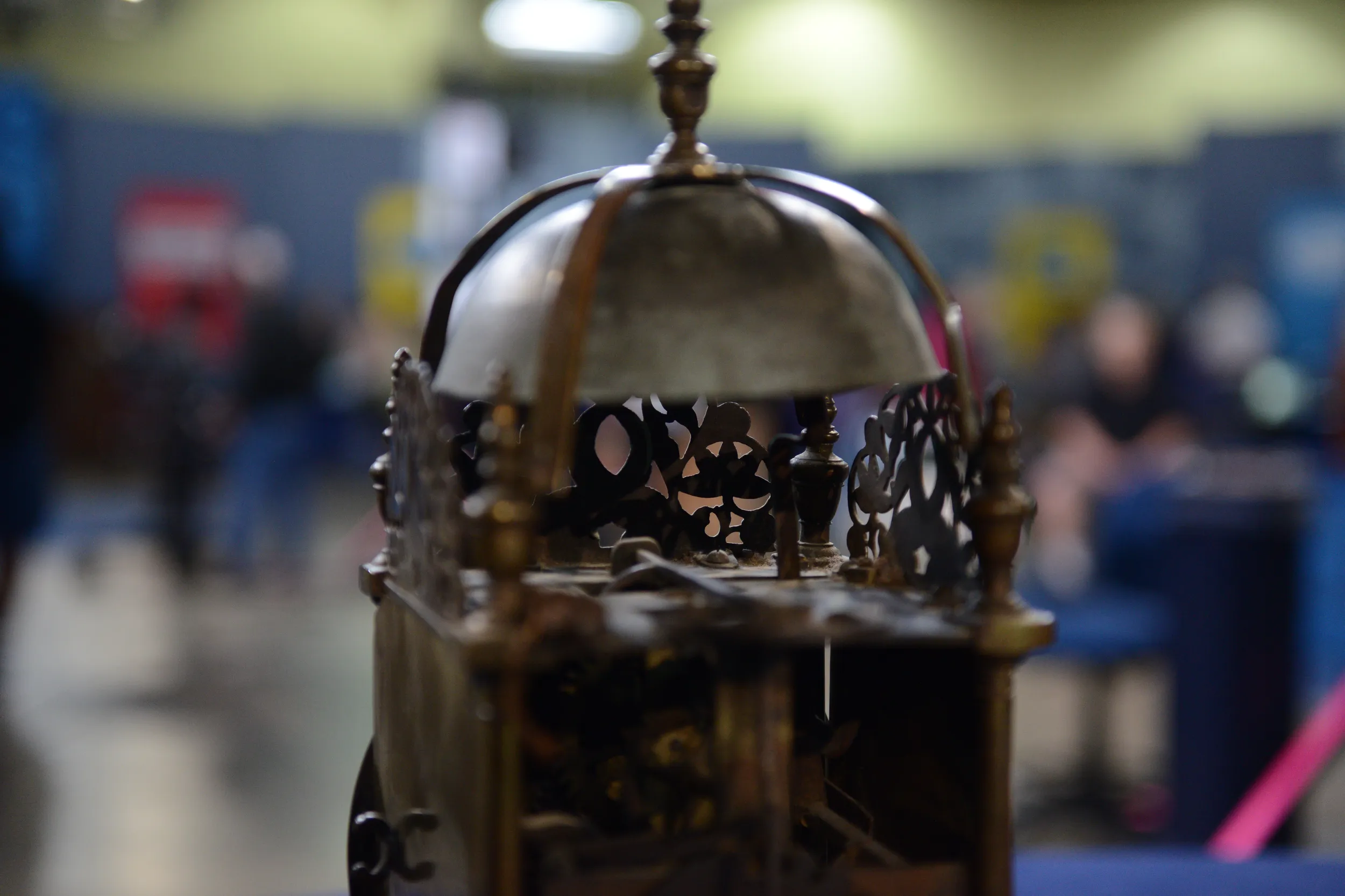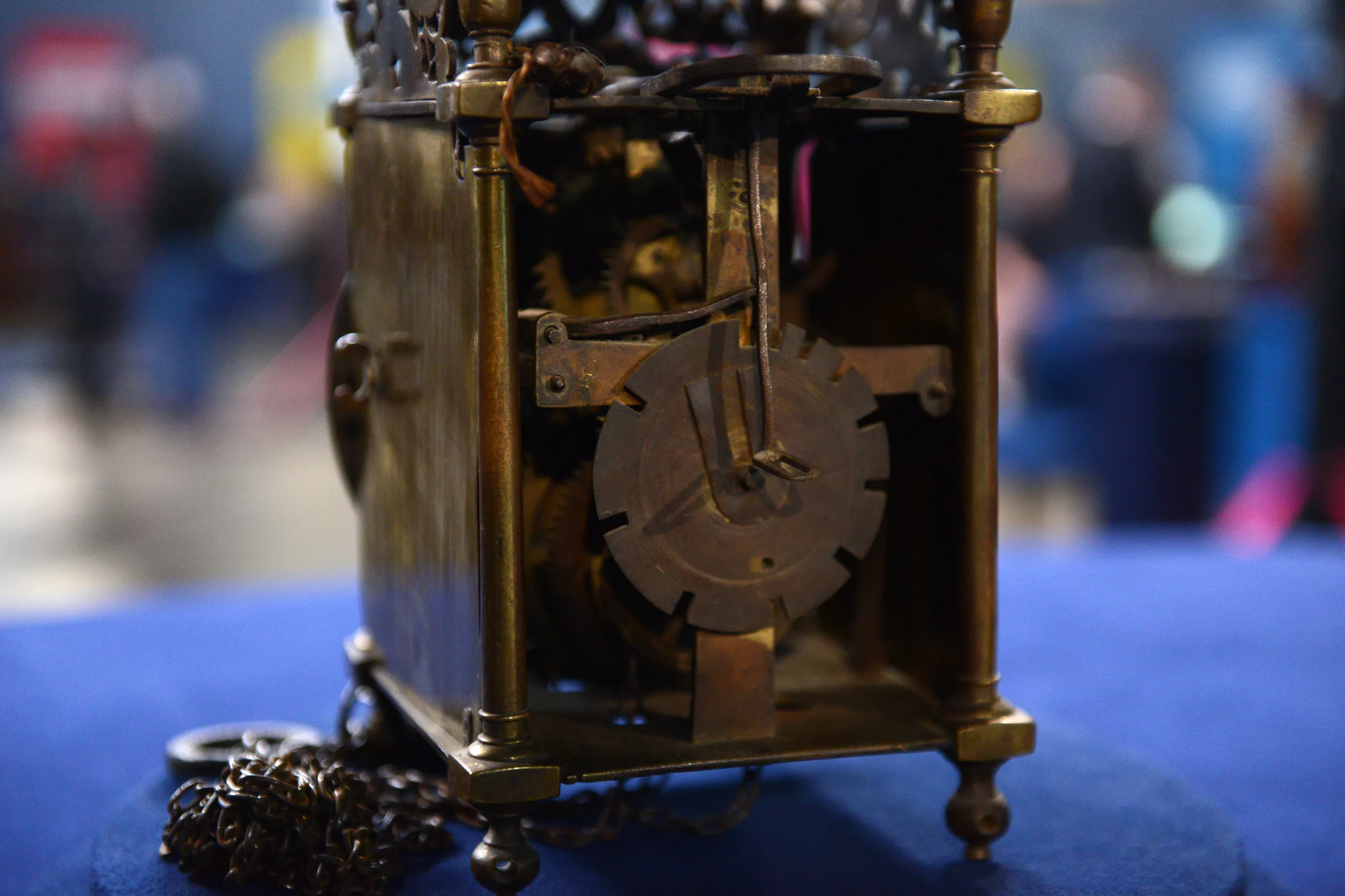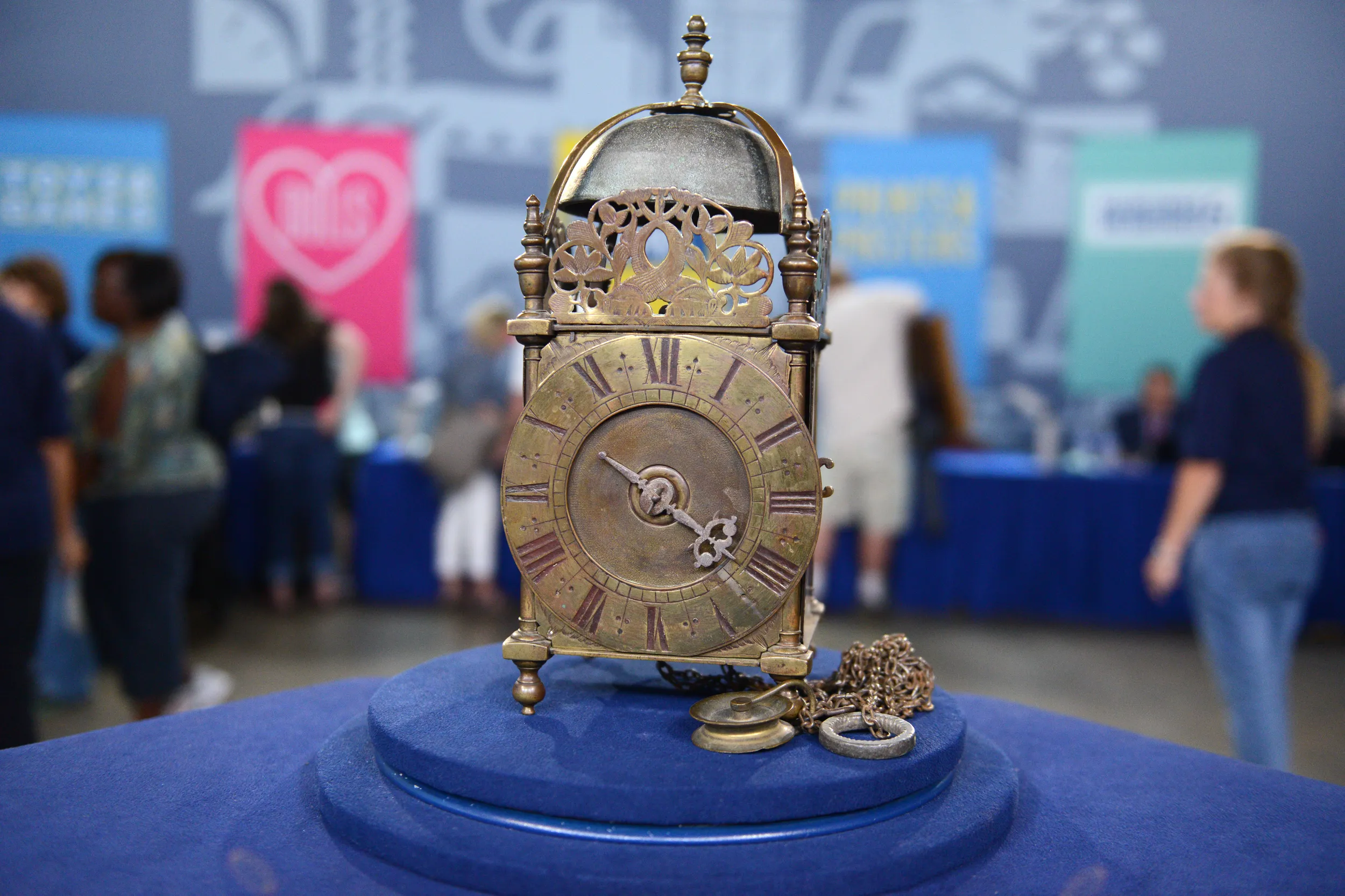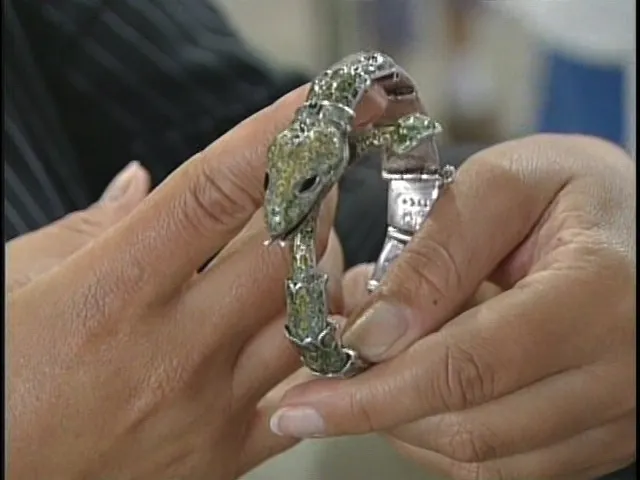GUEST: My dad was in World War II. He was a waist gunner on B-17s, decided to stay in the Air Force.
APPRAISER: Yes.
GUEST: And when I was little in the 1950s, we were stationed in London for about six years.
APPRAISER: Sure.
GUEST: And my mother and dad got really interested in the old things. I grew up being told to stand in the corner of an antique shop and not touch anything (laughs). And this is just something that's always been around. This was actually in a box in his garage.
APPRAISER: Yep.
GUEST: And I came through one day and I asked him what it was, and he said, "Oh, it's one of the early clocks." And I looked at it and he said, "If you want it, take it."
APPRAISER: It's what we call a lantern clock. They got their name because this sort of mimicked the shape of a lantern. Clock probably dates about 1670. Now, this was intended to be a wall clock. It was what we call the first domestic form of clock. This was the first clock that the average person of means could afford. Before that, just people of great wealth could afford a clock because clock making was in its infancy. This was the predecessor to the grandfather clock, and it's a handmade clock. This clock would've probably taken almost a month, a skilled workman's labor for a month, if you could imagine. It was not inexpensive. They were one-day clocks, at best. Some of them even only ran for 12 hours, so it had to be wound twice a day. But weight-driven. That's what would have hung off of the pulley and chain is the counterweight. The clock was made of brass and steel. The clock originally hung on the wall from this loop. And don't think of these as feet. They were sort of like a terminus, a finial. It's an English clock. Originally, this clock had what we call a balance wheel escapement positioned underneath the bell on the clock. This large round disc would rotate back and forth. It would beat one and a half seconds. A real unique sounding clock. Well, when the pendulum was introduced into clocks, most of these were converted. And this one was also converted to a pendulum because instead of being off maybe 15 minutes a day-- it's not very good timekeeping-- all of a sudden, it could keep time within a minute a day.
GUEST: Right.
APPRAISER: Now, going back to the front... You'll notice it was made with just one hand. Now, this one is not signed, and that's typically an indication that it was made outside of the guild system, which was in place at that time. Do you have any idea what your dad may have paid for the clock?
GUEST: I don't know exactly what he paid, but I doubt that he paid a whole lot.
APPRAISER: These clocks today retail usually sell in the $7,000 to $10,000 range.
GUEST (laughing): Is that right?
APPRAISER: Yeah, for a garage clock...
GUEST: So it was worth looking in the box.
APPRAISER: You chose wisely, too.
GUEST: No, that's great. Well, thank you very much, that's great.
APPRAISER: Well, thank you, Senator, for bringing it.
GUEST: Thank you so much for having me.



